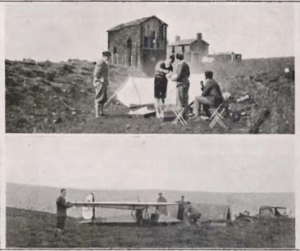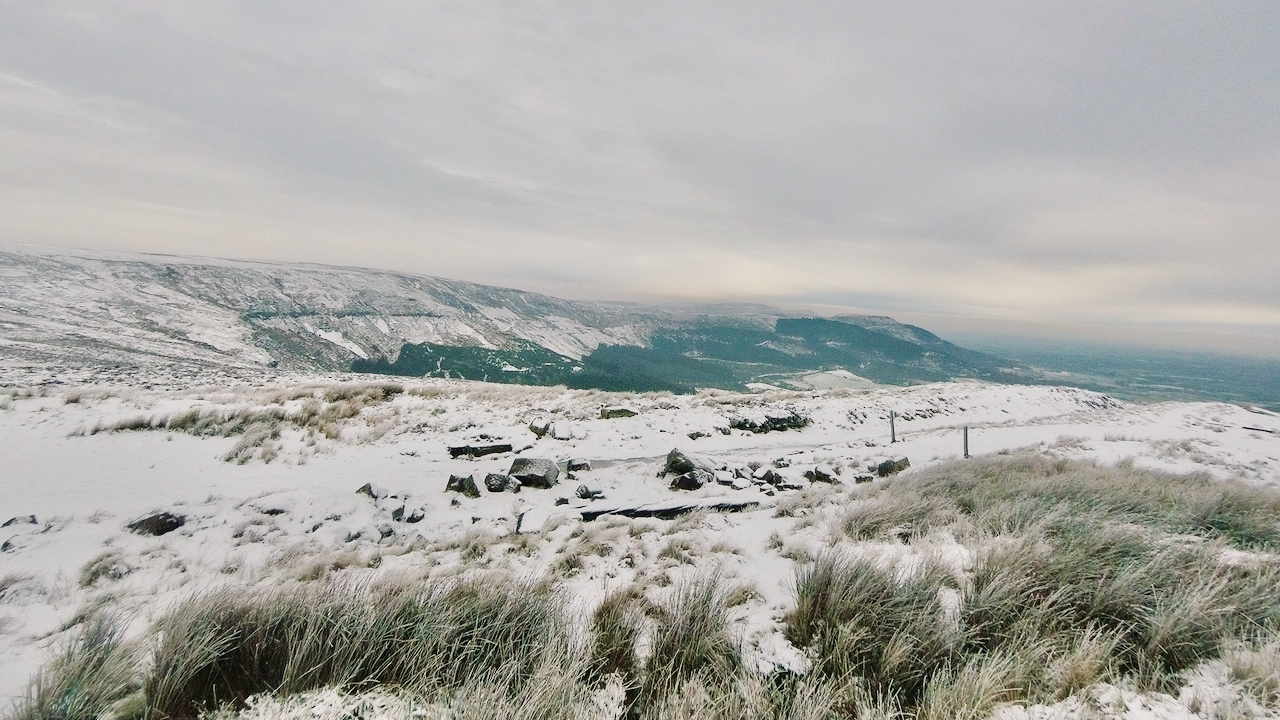If you’d have asked me a week or so ago, I would have said a Scud was a Soviet Union designed ballistic missiles used in the Iraq war.
I have since learnt that a scud is a glider, a low-level detached, irregular cloud, and an acronym that is too crude for me to repeat here, but something to do with dynamite.
This was all prompted by a reader sending to me a copy of THE SAILPLANE AND GLIDER dated May 12th 19331THE SAILPLANE AND GLIDER. May 12th 1933. Vol. 4, No. 9. Official Organ of the British Gliding Association. — thanks John.
In it there is an article about a British height record set by a Scud glider which had taken off from the top of Ingleby Incline2Ibid. Page 100.. The pilot, G. M. Buxton from Harrogate, achieved the height of 2,360 feet above his starting point, on 15th April 1933.
On that Easter saturday, there was a westerly wind and still snow patches on the high moors. The flight was the first of five on that day and lasted just 45 minutes.

Presumably it was ease of access that initially attracted these early gliding enthusiasts to the top of Ingleby incline. The topography must also have had the prospect of generating favourable conditions with the Greenhow valley being described as “a huge bowl facing N. W. The eastern side of this bowl extends considerably further out than the other side, and, as its slope runs north and south, it can be used in a west wind.”
The glider was actually the SCUD II, designed by Mr. L. E. Baynes and constructed by Messrs. E. D. Abbott, Ltd., of Farnham, Surrey3Ibid. Page 98.. It was of a “conventional wooden construction” and cost £984Cliff. 2019. ‘The SCUD Sailplanes’, Scale Soaring (SSUK) <https://scalesoaring.co.uk/the-scud-sailplanes/> [accessed 18 December 2022]. This website offers a history of the plane and the company including some vintage footage of it in action. If you wanted to go gliding yourself on the cheap, you could always buy the blue prints for £8 8s 0d5THE SAILPLANE AND GLIDER. May 12th 1933. Vol. 4, No. 9. Frontispiece advertisement. Official Organ of the British Gliding Association..
It seems the SCUD design was prone to copying, for the same edition of the Sailplane magazine carried a letter from Edward D Abbot disclaiming his company from SCUD copies that had “resulted in the collapse of the seat, which locked the control gears, and burst the side of the cockpit“6Ibid. Page 104..
In 1935, the SCUD II was again used to increase the British height record to 8750 ft.7Cliff. 2019. ‘The SCUD Sailplanes’, Scale Soaring (SSUK) <https://scalesoaring.co.uk/the-scud-sailplanes/#:~:text=A%20Scud%202%20held%20the%20British%20Height%20Record%20of%208750%20ft.%2C%202666%20m.%20in%201935> [accessed 18 December 2022]
The article gives no indication of the launch procedure used but the following year a rubber rope was certainly in use8‘Crash While Taking off | Yorkshire Post and Leeds Intelligencer | Tuesday 04 September 1934 | British Newspaper Archive’. 2022. Britishnewspaperarchive.co.uk <https://www.britishnewspaperarchive.co.uk/viewer/bl/0000687/19340904/296/0009> [accessed 9 December 2022].:
The procedure of a rubber rope launch is follows. The rope attached the nose of the machine and two parties each take two ends of the rope, “which forms a “V” with the machine at its apex. The tail of the machine held back by three other members of the launching party. When the pilot ready he gives the order “Walk ” to the crews at the end of the rope. After they have taken about six steps they receive the further command “Run “finally those who are holding the tail are ordered “Release,” and the machine shoots upwards into the air.
- 1THE SAILPLANE AND GLIDER. May 12th 1933. Vol. 4, No. 9. Official Organ of the British Gliding Association.
- 2Ibid. Page 100.
- 3Ibid. Page 98.
- 4Cliff. 2019. ‘The SCUD Sailplanes’, Scale Soaring (SSUK) <https://scalesoaring.co.uk/the-scud-sailplanes/> [accessed 18 December 2022]
- 5THE SAILPLANE AND GLIDER. May 12th 1933. Vol. 4, No. 9. Frontispiece advertisement. Official Organ of the British Gliding Association.
- 6Ibid. Page 104.
- 7Cliff. 2019. ‘The SCUD Sailplanes’, Scale Soaring (SSUK) <https://scalesoaring.co.uk/the-scud-sailplanes/#:~:text=A%20Scud%202%20held%20the%20British%20Height%20Record%20of%208750%20ft.%2C%202666%20m.%20in%201935> [accessed 18 December 2022]
- 8‘Crash While Taking off | Yorkshire Post and Leeds Intelligencer | Tuesday 04 September 1934 | British Newspaper Archive’. 2022. Britishnewspaperarchive.co.uk <https://www.britishnewspaperarchive.co.uk/viewer/bl/0000687/19340904/296/0009> [accessed 9 December 2022].

Leave a Reply